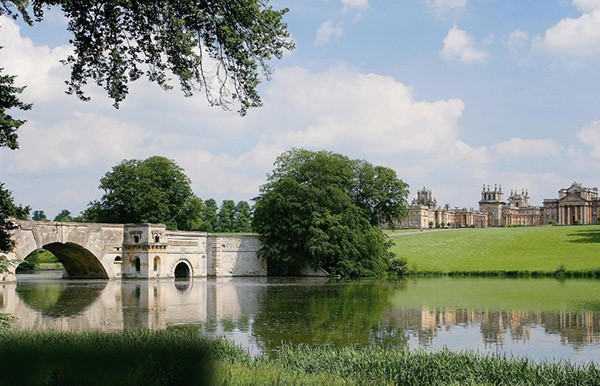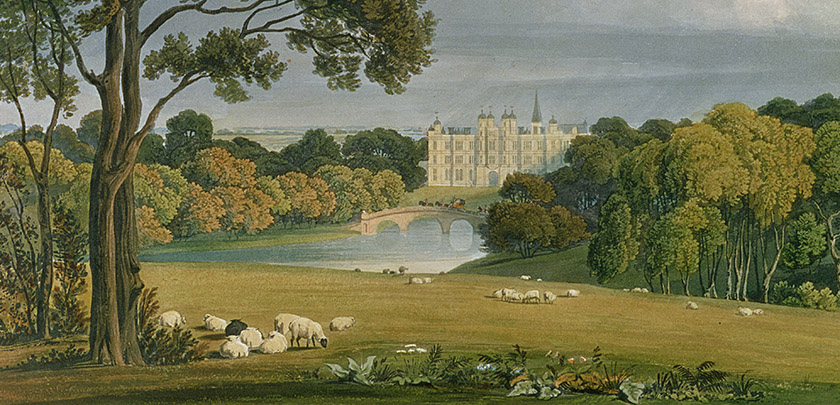
Capability Brown: Celebrating 300 years of England’s ‘best gardener’
2016 is the 300th anniversary of the birth of one of the UK’s greatest landscape architects, Lancelot ‘Capability’ Brown, with a year-long festival launched to celebrate his life, work and legacy.
Born in 1716, his panoramas of rolling grassland, mighty oaks and shimmering water still grace many stately homes and parks across England including Blenheim Palace, Chatsworth, Burghley, Compton Verney and Highclere Castle – the real Downton Abbey.
Lancelot Brown became known as ‘Capability’ because of his fondness of speaking of a country estate having a great ‘capability’ for improvement. His work, revolutionary in its day, moved away from the traditional French formal style, developing a ‘natural’ style of gardening with views and vistas.
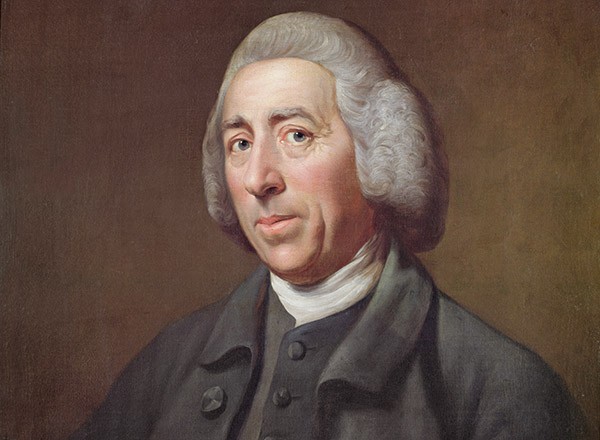
Portrait of Lancelot Capability Brown (1716-83) by Nathaniel Dance-Holland (1734-1811)
© Burghley House Collection, Lincolnshire, UK / Bridgeman Images
Where it all began… Lancelot ‘Capability’ Brown at Stowe
It was at Stowe that Brown made his mark. Getting a job as a member of Lord Cobham’s gardening staff, he worked under William Kent (1685-1748), one of the founders of the new English style of landscape gardening. It was Kent who coined the phrase “nature abhors straight lines” and Brown adopted the philosophy wholeheartedly.
Arguably his greatest creation at Stowe was the Grecian valley, a ground breaking realisation of an Arcadian vision of Ancient Greece. He became Master Gardener by the age of 26 and was quickly sought after by aristocrats with huge estates, as the must-have landscape gardener.
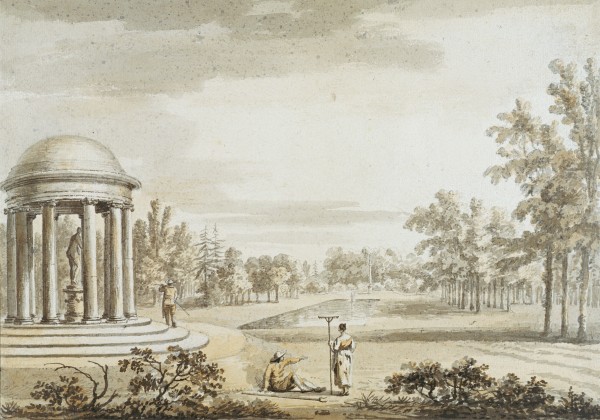
The Rotunda and the Queen’s Theatre, Stowe, 1753 (w/c on paper), Jean Baptiste Claude Chatelain (1710-71) Yale Center for British Art, Paul Mellon Collection, USA / Bridgeman Images
The 7-mile round grounds at the Burghley estate in Lincolnshire were one of the most important commissions of his career which took more than 25 years to complete.
Characteristics of his work included grass meadows in front of the mansion, serpentine lakes, follies and circular clumps of trees. This was gardening on a vast scale, creating parkland and woodland, and using trees to give the same effect as shrubs in regular gardens.
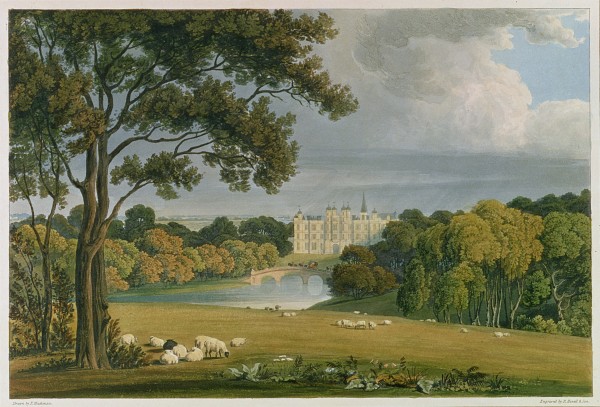
View of Burghley House, engraved and published by Robert Havell (1769-1832), 1819 (colour engraving) Frederick Mackenzie (c.1788-1854) (after) The Stapleton Collection
A mania was sweeping through the aristocracy, inspired by their Grand Tours in Italy and tastes for Claude Lorrain’s pastoral landscapes.
Brown was commissioned by the 4th Duke of Marlborough in 1763, to transform 2,000 acres of of Blenheim Palace Parkland which included creating the lake, two Ha Has, building a dam and the Grand Cascades and reimagining the Courtyard. Blenheim Palace’s Great Lake, situated in front of the Palace is declared by many to be Brown’s most magnificent piece of work.
The Doric Temple at Petworth House, West Sussex, one of the first country seats Brown ‘improved.’
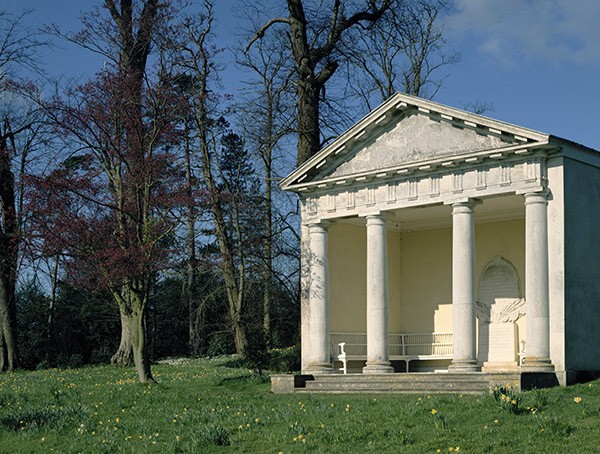
A Doric temple in the gardens (photo), English School, (18th century) / Petworth House, Sussex, National Trust Photographic Library/Rupert Truman
Petworth has an expansive deer park, landscaped by Capability Brown, which contains the largest herd of fallow deer in England. His idealised vistas were later captured by artists including JMW Turner.
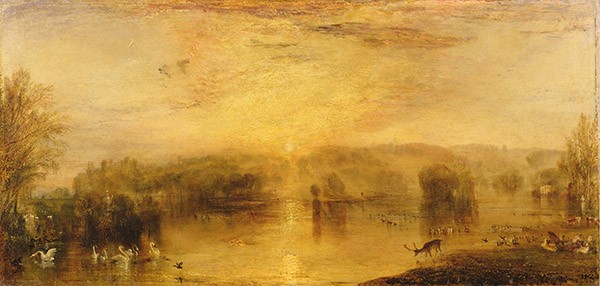
The Lake, Petworth: Sunset, a Stag Drinking, c.1829, JMW Turner (1775-1851)
Petworth House, Sussex, UK
At Belvoir Castle in Leicestershire the Duchess of Rutland is creating a new landscape from a long-lost design drawn up by Brown himself… 235 years behind schedule. The document surfaced only recently in the castle archives, drawn up for the 4th Duke of Rutland in 1780, proposing a landscape with woodland and a river running through it. To complete Brown’s vision the Duchess planted tens of thousands of trees and dug three new lakes to create a stretch of water a mile and a half long.
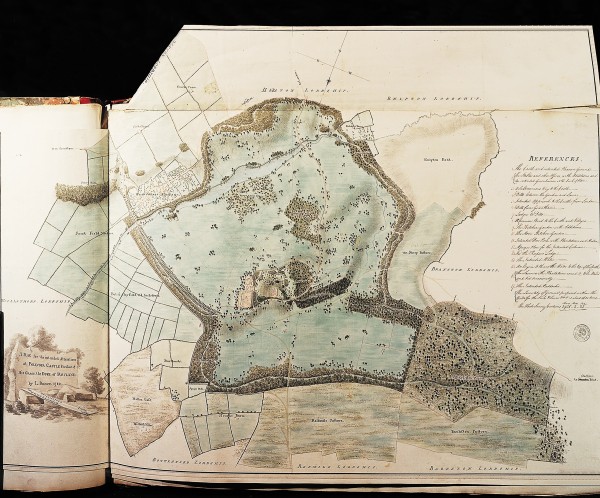
Designs for the Parkland at Belvoir Castle by Capability Brown (1716-83)
© Belvoir Castle, Leicestershire, UK
Images & Licensing
See all Capability Brown images in the Bridgeman archive.
Bridgeman Images represents the collections of 28 historic houses in the United Kingdom for image licensing including Burghley, Chatsworth and Belvoir Castle.
The year of Capability
Throughout 2016, the 300th anniversary is being marked with the Capability Brown Festival. ‘He was the Shakespeare of gardening, and we want to place him back in the pantheon of important people who made Britain great, and recognise what he achieved,’ says festival director Ceryl Evans.
For details of the other events marking the anniversary this year, see capabilitybrown.org

